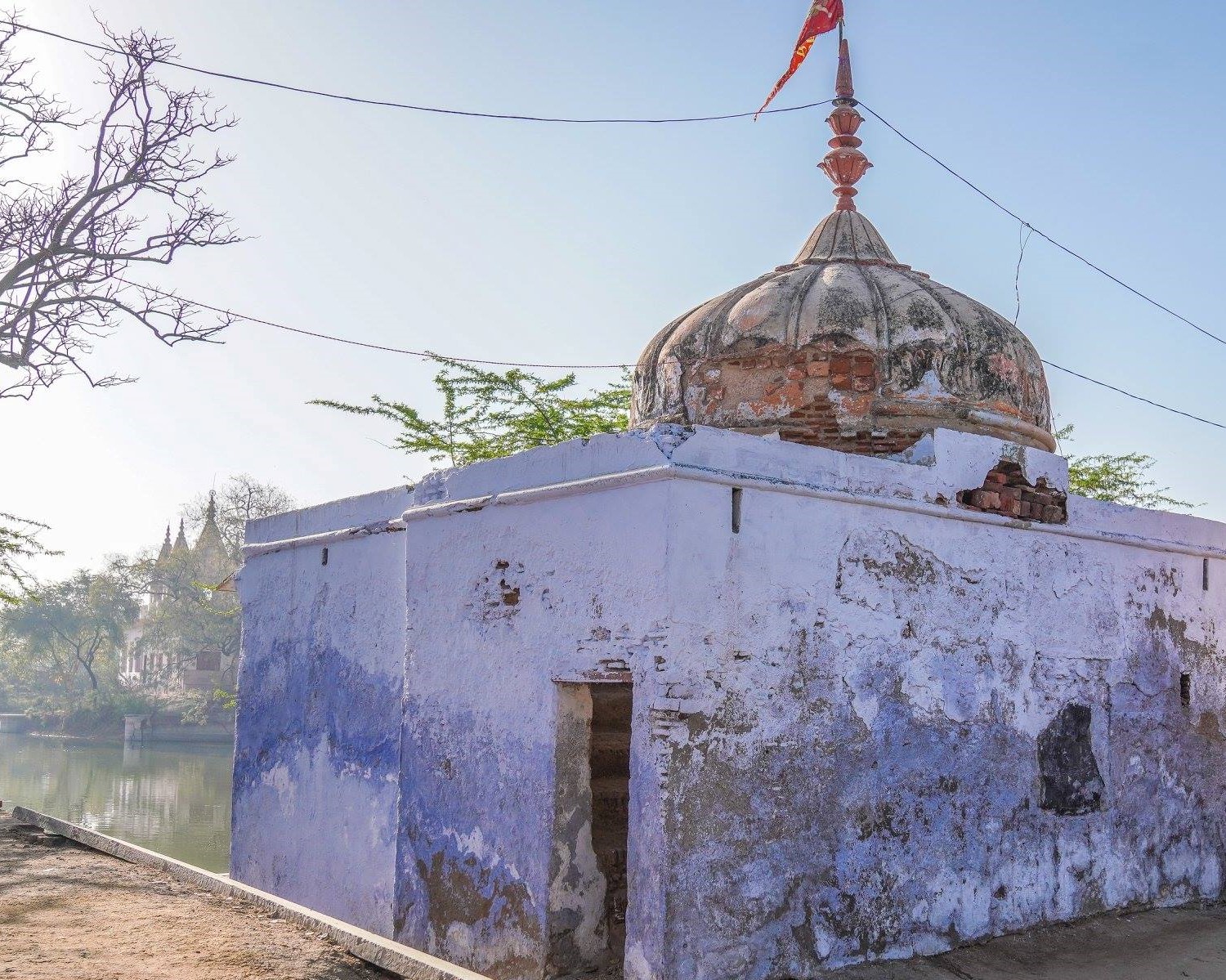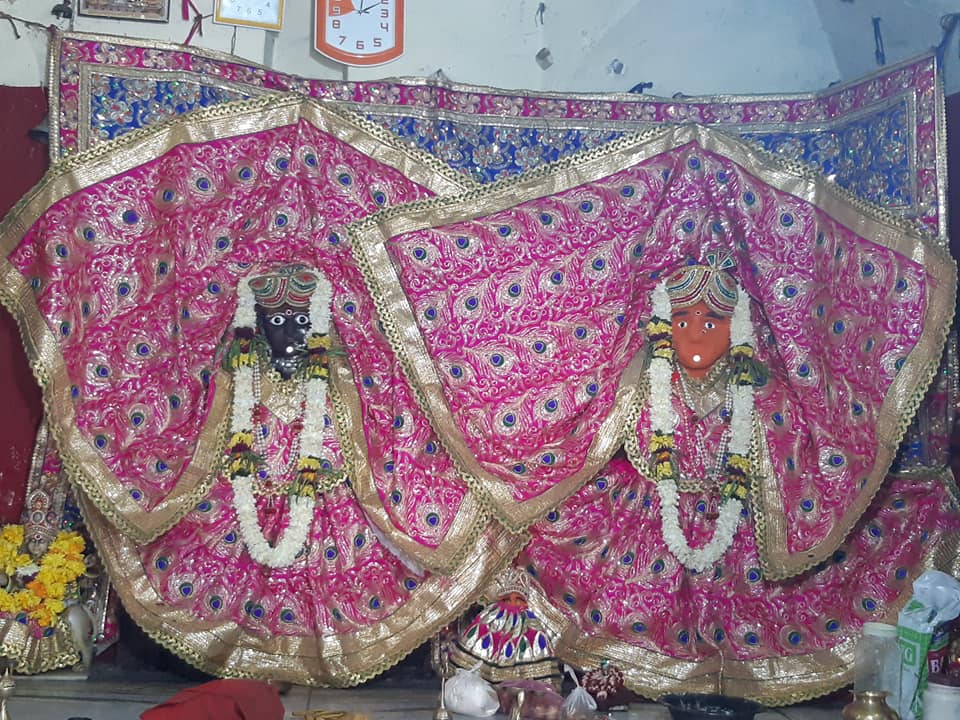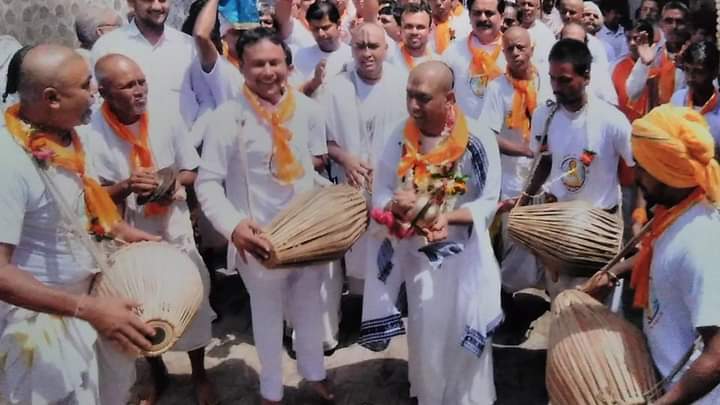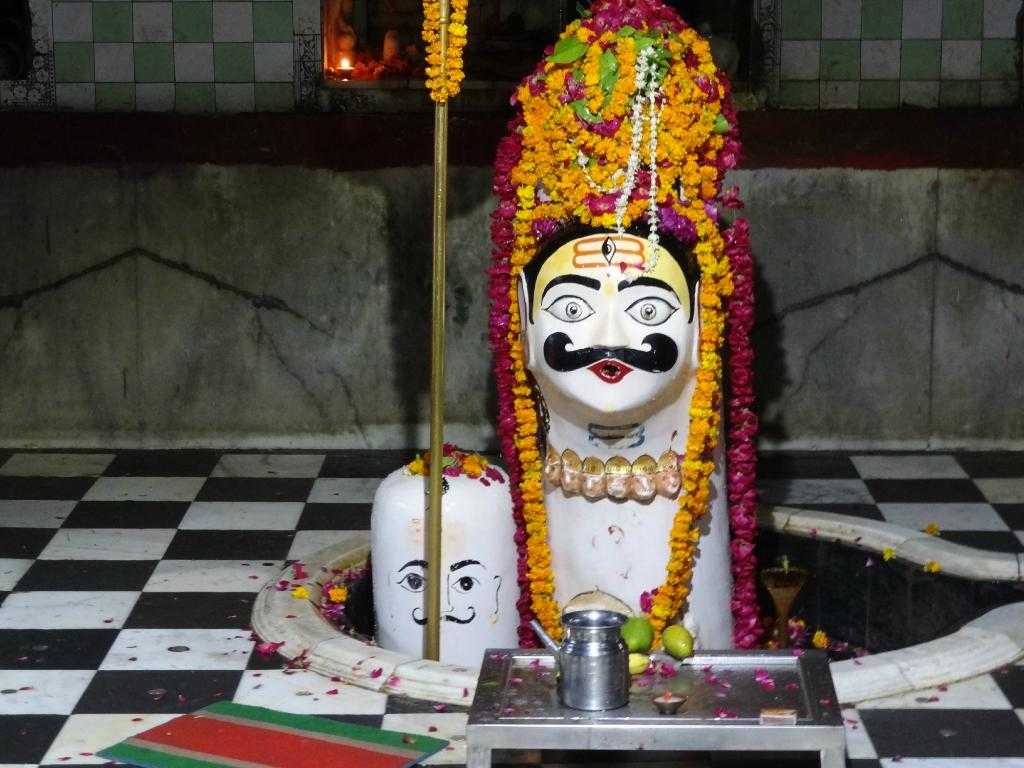2023.12.20 (Vrindavan Today News): Today is the festival of Siddha Sri Madhusudan Das Babaji Maharaja, and Vaishnavas from all around the 84 krosh Vraja-mandal gather to commemorate his disappearance. A contemporary of Siddha Krishna Das Baba of Govardhan, and according to some, the vesh-guru of Jagannath Das Babaji, he became renown as a siddha due to some extraordinary events taking place in the course of his bhajan.
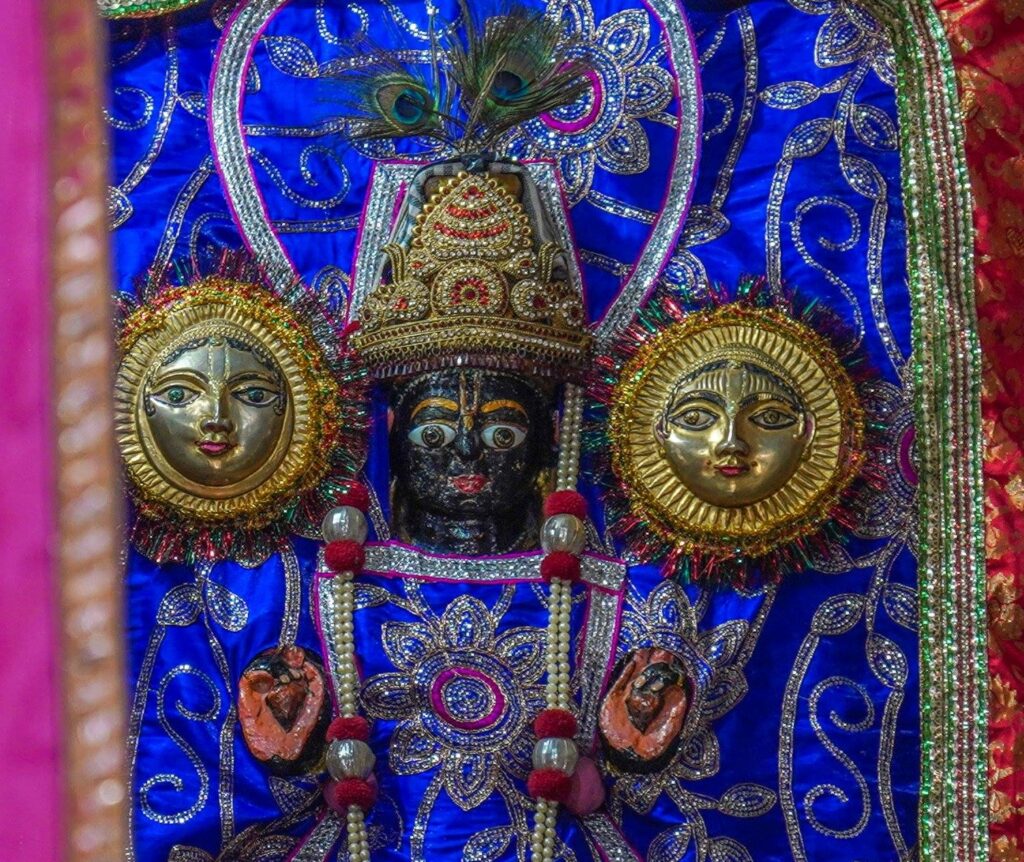
Madhusudan Das was born in Kulina brahmin family. In his youth, his parents arranged a marriage against his wishes. On the night of his wedding, he escaped for Vrindavan, leaving behind his bride and family. Wishing to not be detected by anyone, he lived in secluded places. One day, as he sat on the banks of Yamuna, contemplating on the need to receive mantra-diksha, he met a mahanta from the lineage of Gangamata. The mahanta instructed Madhusudan Das to take bath in Yamuna, after which he would be initiated. Having bathed, the mahant bestowed him the ten-letter Krishna-mantra, explaining its import.
Lost in joy, Madhusudan sank into a trance, only to discover that his guru was nowhere to be found as he eventually regained external consciousness.
Desiring to learn more on the mysteries of raganuga-sadhana, he sought shelter of Siddha Krishnadas Baba of Govardhan. Siddha Baba inquired about his guru-pranali, or succession of teachers. The customary method of worshiping Radha-Krishna on raga-marga is to conduct the service in allegiance to one’s succession of gurus in their siddha-svarupas. This channel, through which the divine moods of Vraja flow down to the sadhaka-bhakta, is commonly known as the siddha-pranali. One is to know the divine characteristics of the siddha-rupas of his guru and the entire succession of gurus traced back to the associates of Sri Chaitanya, contemplating on oneself as one among the manjaris, serving under the guidance and command of guru-manjari and the group of manjaris in one’s pranali. Such guru-pranalis are often called parivars, or families. The siddha-pranali is truly our family forever. Each pranali has their individual characteristics and methods of bhajan to be observed.
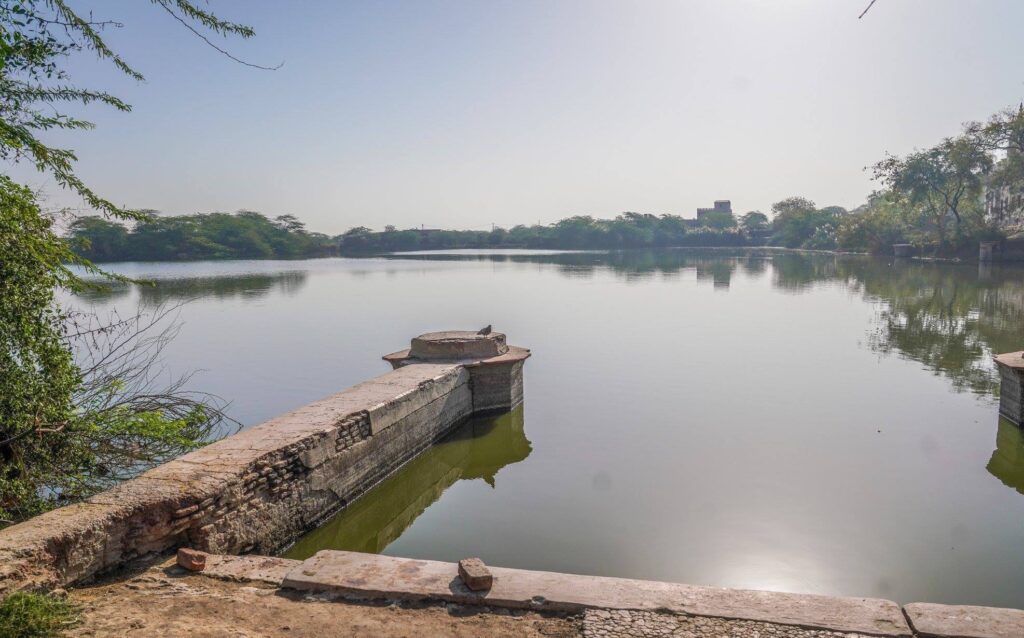
Given the extraordinary circumstances surrounding his diksha, Madhusudan Das was unable to say anything of his pranali. Regretting this, Siddha Krishnadas Baba said that he would be unable to teach him the worship of raga-marga according to the customary methods, and directed him to Siddha Jayakrishna Baba of Kamyavana, hoping that he might perhaps be of assistance. There was a great predicament there. Madhusudan Das could not take initiation again, since he had already received the mantra. Jayakrishna Das Babaji directed him to seek shelter of harinama, praying earnestly and awaiting what Sriman Mahaprabhu and Sri Radha would arrange for him.
Feeling despondent, he left for Radha-kunda and thought of leaving his body in the waters of the sacred pond, as what good would maintaining it be if he could not learn the true methods of bhajana. One night, he tied himself to a big Govardhan-shila and thrust himself into Radha-kunda. All of a sudden, someone grasped him, took the stone off his neck, placing a palm-leaf into his hand and throwing him to the bank of the kunda. On the palm leaf was written all he needed for commencing his bhajan. After consulting the two aforementioned Siddha Babas of Vraja, he again returned for Radha-kunda, receiving the darshan of Sri Radha. In this vision, he was directed to go to Surya-kunda and spend the remainder of his life there, steeped in bhajan.
Towards the end of his life, on one day he narrated the glories of Sri Yogapitha to a sadhaka who came to consult him on the matter. Amidst the explanation, Siddha Baba fell into samadhi, to never awaken again for our vision. Baba had joined Radha-Shyama in their yogapitha-milana.
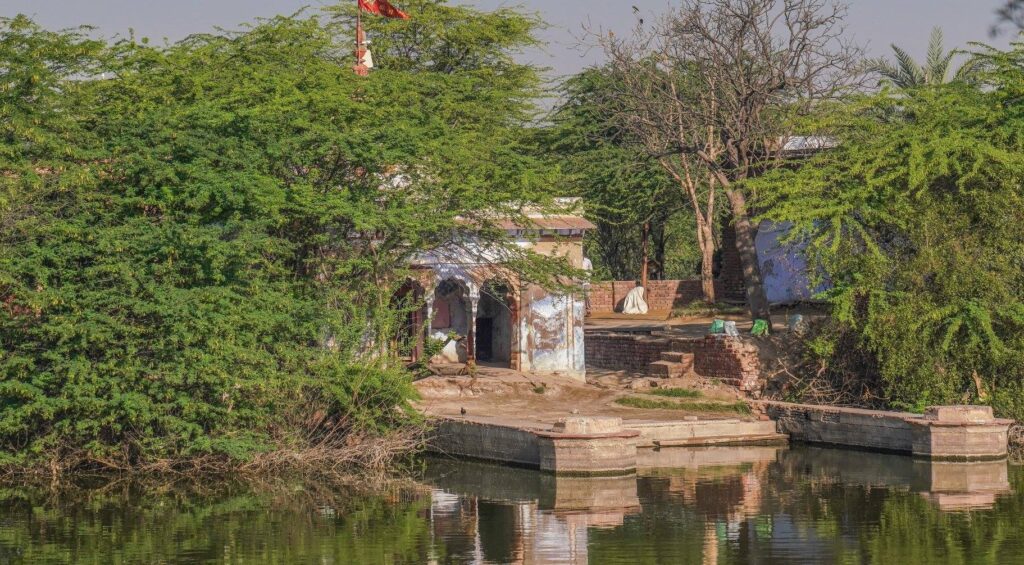
Returning to the festival… Every year, many sadhakas walk to Surya-kunda from their respective bhajana-sthalis. However, since we were offered a car drive, we took the easy route. Last year we walked the route from Radha-kunda to Surya-kunda, it is a beautiful and scenic walk there. As we reach Surya-kunda, the kirtana is already in progress. Hundreds of devotees have gathered for the festival, there are even a number of buses parked around the location. Surya-kunda is truly a charming place, still fairly untouched by urbanization, unlike many other places around Vraja-mandala.
Briefly walking around and taking darshan of the thakurjis, Nitai-Gaura, and the samadhi of Siddha Baba, we head for the parikrama of Surya-kunda. On the other side of Surya-kunda, you’ll find the bhajan-sthali and samadhi of Gopal Das Baba from Manipur, who stayed there for four decades. He, too, is told to have received the darshan of Radharani in the course of his bhajan. Completing the parikrama, we reach the temple of Surya-deva.
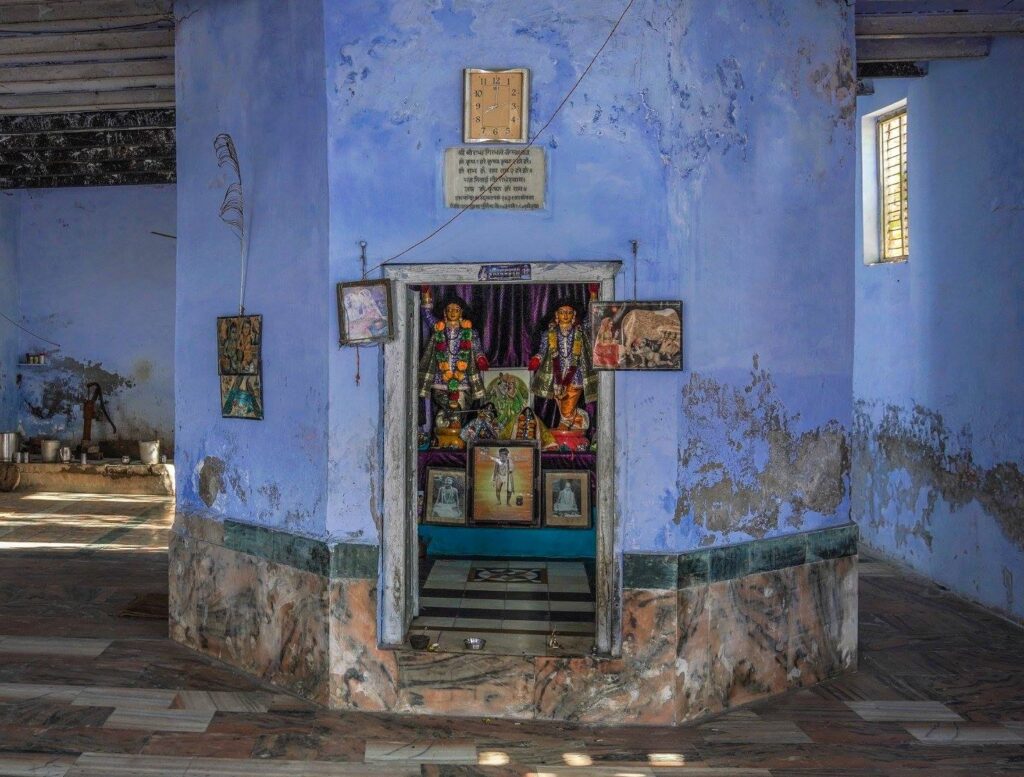
In the afternoon, Sri Radha and her sakhis walk from Radha-kunda to worship Surya in this temple, and of course, to meet her priyatama. Krishna, posing as a brahmin youngster, his disguise undetected by Jatila who has come to spy on Radha and to ensure she will not meet Krishna, engages Radha in the worship of Surya, having her chant mantras with varieties of clever double-meanings. These nectarine pastimes are narrated in rasika-texts such as Krishna-bhavanamrita and Govinda-lilamrita that describe the asta-kaliya-lila, or the eight-fold daily pastimes of Radha and Krishna.
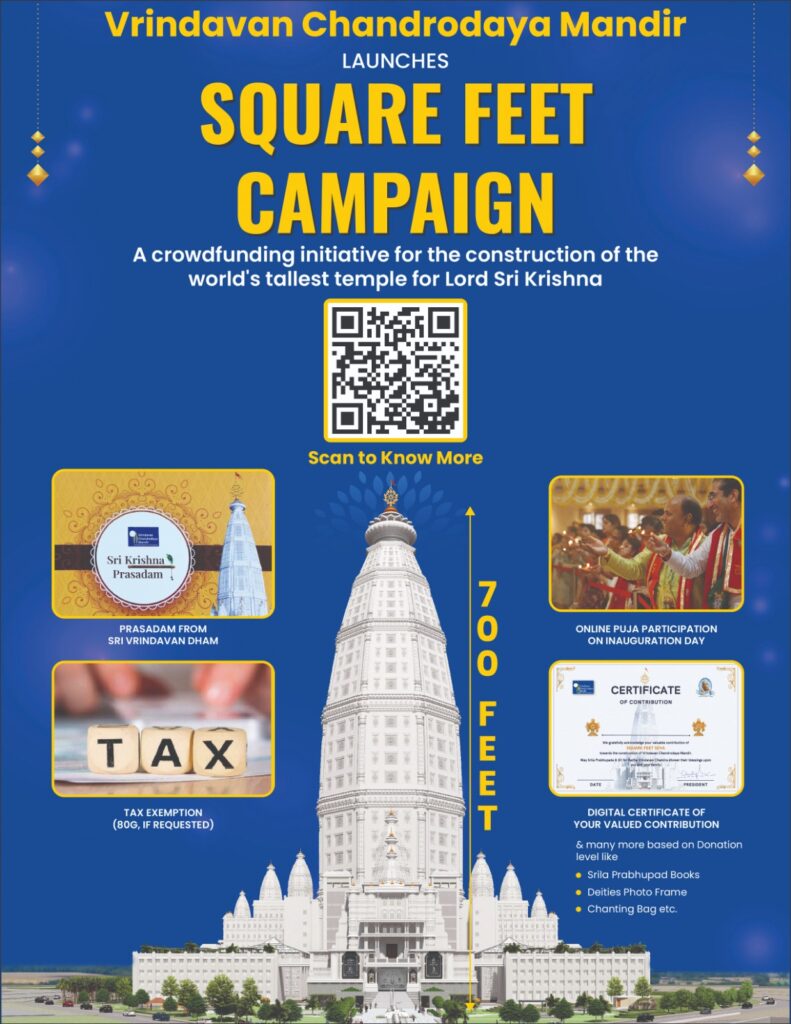
After the kirtan in the yard of the ashram of Siddha Baba on the opposite side of the kunda from the temple concludes, another roaring kirtan begins in the kirtan-hall. The kirtan-party dances out and along the streets, reaching the mandir of Surya-deva, where kirtan describing the madhyahna-lila (mid-day pastimes) is sung. As the kirtan-party returns to the ashram, prasada-seva begins. Causathi-mahanta-bhoga has been offered. In the kirtan-hall of the ashram, a plate was prepared for each of the 64 main associates of Sri Chaitanya Mahaprabhu, a name written next to each of them. This is commonly done in various major festivals.
(This article was originally posted in Vrajajournal in 2004. Today is again the disappearance day of Siddha Baba.)


